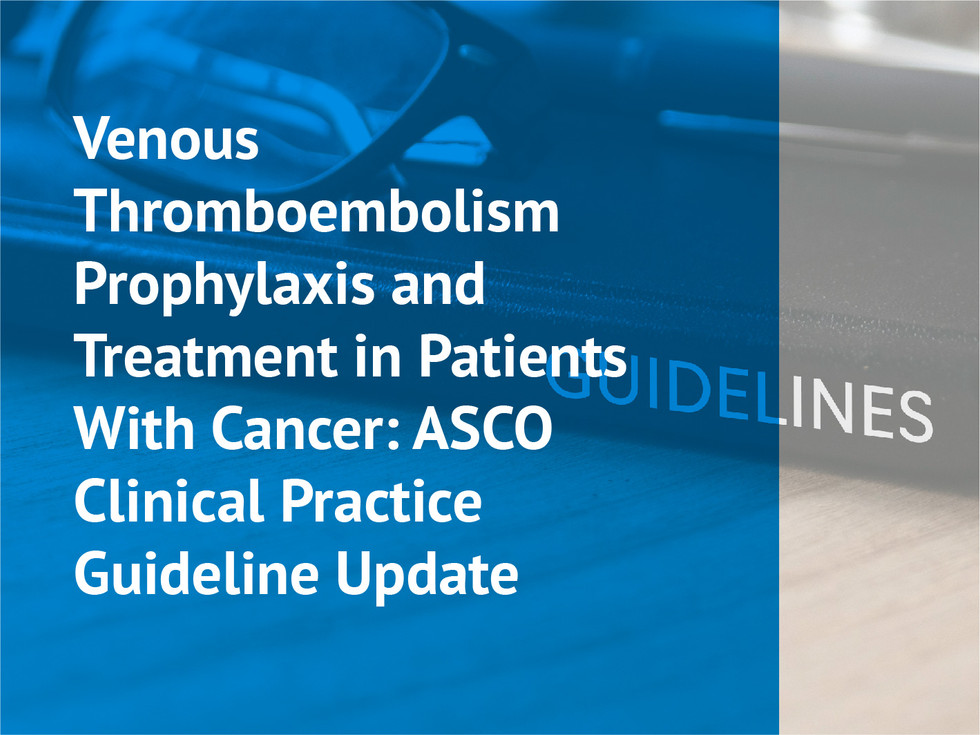Venous Thromboembolism Prophylaxis and Treatment in Patients With Cancer: ASCO Clinical Practice Gui
- yatidxm
- 29 Jun 2021
- 1 menit membaca
Diperbarui: 4 Jul 2021
PURPOSE
To provide updated recommendations about prophylaxis and treatment of venous thromboembolism (VTE) in patients with cancer.
METHODS PubMed and the Cochrane Library were searched for randomized controlled trials (RCTs) and meta analyses of RCTs published from August 1, 2014, through December 4, 2018. ASCO convened an Expert Panel to review the evidence and revise previous recommendations as needed.
RESULTS The systematic review included 35 publications on VTE prophylaxis and treatment and 18 publications on VTE risk assessment. Two RCTs of direct oral anticoagulants (DOACs) for the treatment of VTE in patients with cancer reported that edoxaban and rivaroxaban are effective but are linked with a higher risk of bleeding compared with low-molecular-weight heparin (LMWH) in patients with GI and potentially genitourinary cancers. Two additional RCTs reported on DOACs for thromboprophylaxis in ambulatory patients with cancer at increased risk of VTE.
RECOMMENDATIONS Changes to previous recommendations: Clinicians may offer thromboprophylaxis with apixaban, rivaroxaban, or LMWH to selected high-risk outpatients with cancer; rivaroxaban and edoxaban have been added as options for VTE treatment; patients with brain metastases are now addressed in the VTE treatment section; and the recommendation regarding long-term postoperative LMWH has been expanded. Re-affirmed recommendations: Most hospitalized patients with cancer and an acute medical condition require thromboprophylaxis throughout hospitalization. Thromboprophylaxis is not routinely recommended for all outpatients with cancer. Patients undergoing major cancer surgery should receive prophylaxis starting before surgery and continuing for at least 7 to 10 days. Patients with cancer should be periodically assessed for VTE risk, and oncology professionals should provide patient education about the signs and symptoms of VTE.
Additional information is available at www.asco.org/supportive-care-guidelines.


